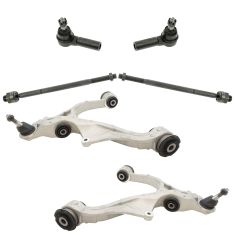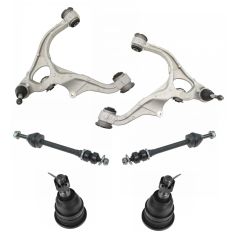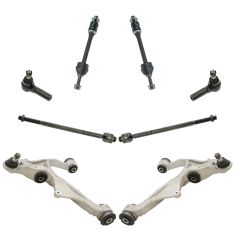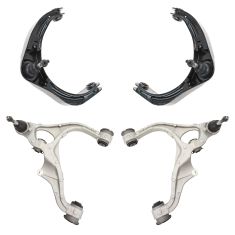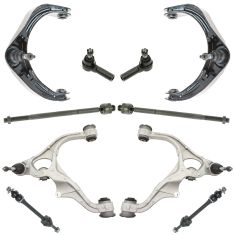1ASFK05700-Dodge Ram Front Driver & Passenger Side Lower 2 Piece Control Arm with Ball Joint Set TRQ PSA87563
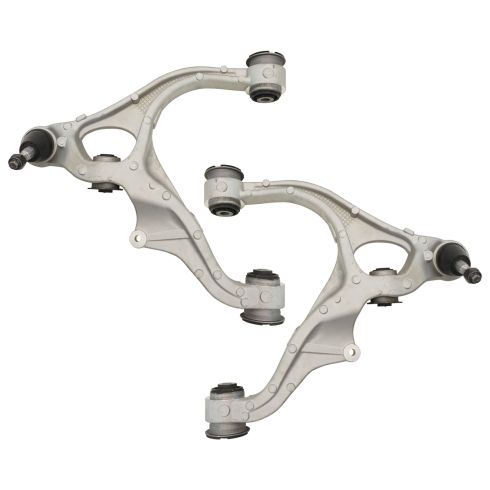
Replaces
2008 Dodge Ram 1500 Truck 4 Wheel Drive Front Driver & Passenger Side Lower 2 Piece Control Arm with Ball Joint Set TRQ PSA87563

Product Reviews
Loading reviews
5.00/ 5.0
9
9 reviews
Great Service
October 12, 2018
High quality product and easily installed. Truck drives like NEW again.
Impressive inventory and service.
I would definitely recommend both the control arms and 1A Auto!
Control arms
September 25, 2019
Must say good product. Looks good on my dodge. Very clean. U guys rock it out on fast service. And if anyone needs stuff from a1 . Keep on going n dont back out. Good service I'm pleased for sure. Thanks guys
Ram 1500 front end rebuild
January 17, 2020
Everything was top notch , great prices and shipping
Thanks
Great parts for a great price !
October 10, 2020
Driven a little over 1500 miles so far and the ride is great.
March 15, 2022
Awesome service and fast shipping!!! Great job!!!
Will purchase again
June 2, 2022
Noise problem is solved.
New control arms
July 7, 2022
Had to replace my OEM ones and now these won't rust. Very happy fit perfectly. Can't ask for much better price. 5 stars.
excellent product
June 29, 2023
excellent product and quality
Lower control arms
August 22, 2023
Great product looks great perfect fit and solid can't ask for more good price
Customer Q&A
Do the ball joints have grease zerks? The picture does not look like it would
November 17, 2018
10
No
November 17, 2018
R I
10
No they don't have grease fittings at all.
November 18, 2018
Andy F
10
These parts already come pregreased.
November 18, 2018
Emma F
10
No
November 19, 2018
R I
Is this just one side or is this for both sides?
August 13, 2020
10
Both sides
August 14, 2020
C A
10
Hello,
This listing is for a pair of lower control arms. One for the driver side one for the passenger side. Thanks!
August 14, 2020
Adam G
Would they fit in my 2007 ram 1500 4wd sitting on a 7in pro Como lift ?
November 25, 2021
Would they fit in my 2007 ram 1500 4wd sitting on a 7in pro Como lift ? On my front passenger side
November 25, 2021
10
This part is not compatible with models equipped with a lift or any sort of modifications.
November 29, 2021
Jessica D
2014 ram 1500 4wd will it matter if its 4wd?
February 19, 2022
10
Yes, these parts only fit the 4WD model.
February 19, 2022
Cristina P
Where are these Control Arms Manufactured?
April 23, 2022
10
China- for the price expect that! USA are about 600+ Mine are working great!
April 23, 2022
Welder Mike W
10
China- for the price expect that! USA are about 600+ Mine are working great!
April 23, 2022
Micheal J
10
I dont know, but they perform well.
April 24, 2022
Gary C
10
I dont know, but they perform well.
April 24, 2022
Gary C
10
I dont know, but they perform well.
April 24, 2022
Gary C
10
We do not have a specific country of origin for the parts at this time.
April 25, 2022
Emma 1
Are these aluminum?
October 15, 2024
10
Yes, the control arms will be aluminum.
October 16, 2024
Jessica D
Dodge is a registered trademark of FCA US LLC. 1A Auto is not affiliated with or sponsored by Dodge or FCA US LLC.
See all trademarks.









